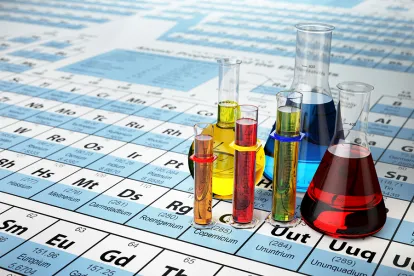On July 25, 2019, the House Science, Space, and Technology Subcommittee on Research and Technology held a hearing on “Benign by Design: Innovations in Sustainable Chemistry.” Subcommittee Chair Haley Stevens (D-MI) opened the hearing, stating that she looked forward to a discussion about the market drivers for sustainability in the chemical industry, the integration of sustainability in chemistry education, and the role of the federal government in supporting research and commercialization of these innovations. During the hearing, Subcommittee members and witnesses discussed the bipartisan Sustainable Chemistry Research and Development Act (H.R 2051), introduced by Representative Daniel Lipinski (D-IL). The bill is intended to improve coordination of federal activities, including research and development (R&D) of more sustainable chemicals, processes, and systems. The bill also supports improved education and training in sustainable chemistry and expands opportunities for the federal government to partner with industry to bring innovations to market.
The Subcommittee posted the following opening statements:
- Subcommittee Chair Haley Stevens (D-MI); and
- House Science, Space, and Technology Committee Chair Eddie Bernice Johnson (D-TX).
The Subcommittee heard from the following witnesses:
- Dr. Tim Persons, Chief Scientist and Managing Director, Science, Technology Assessment, and Analytics, U.S. Government Accountability Office (GAO);
- Dr. John Warner, President and Chief Technology Officer, Warner Babcock Institute for Green Chemistry;
- Dr. Julie Zimmerman, Professor and Senior Associate Dean, School of Forestry and Environmental Studies and Deputy Director, Center for Green Chemistry and Green Engineering, Yale University;
- Ms. Anne Kolton, Executive Vice President, Communications, Sustainability, and Market Outreach, American Chemistry Council (ACC); and
- Mr. Mitchell Toomey, Director of Sustainability, BASF in North America.
In its 2018 report, Chemical Innovation: Technologies to Make Processes and Products More Sustainable, GAO identified the following options to realize the full potential of sustainable chemistry:
- Breakthrough technologies in sustainable chemistry and a new conceptual framework could transform how the industry thinks about performance, function, and synthesis;
- An industry consortium, working in partnership with a key supporter at the federal level, could help make sustainable chemistry a priority and lead to an effective national initiative or strategy;
- Integrating sustainable chemistry principles into educational programs could bolster a new generation of chemists, encourage innovation, and advance achievement in the field;
- A national initiative that considers sustainable chemistry in a systematic manner could encourage collaborations among industry, academia, and the government, similar to the National Nanotechnology Initiative; and
- There are opportunities for the federal government to address industry-wide challenges such as developing standard tools for assessment and a robust definition of sustainable chemistry. Federal agencies can also play a role in demonstrating, piloting, and de-risking some technology development efforts.
During the hearing, witnesses supported these options. Persons testified that the work needed to realize the promise of sustainable chemistry includes: (1) development of a robust definition of sustainable chemistry leading to a lifecycle assessment framework for metrics, measurement tools, and assessments; (2) the realization of a strategic and effective national initiative formulated by the federal government in partnership with industry, academia, and key nonprofit institutions; and (3) the integration of sustainable chemistry principles into educational programs for the current and future generations of chemists. Warner’s written testimony lists 12 principles of green chemistry, including designing safer chemicals, design for energy efficiency, use of renewable feedstocks, and design for degradation. According to Warner, sustainable chemistry “is a large umbrella concept that addresses the many aspects of the chemical supply chain,” while green chemistry “specifically focuses on the inventive process to reduce or eliminate the use and generation of hazardous material in the first place.” In her written testimony, Zimmerman stated that for green and sustainable chemistry to be integrated systematically into the design, manufacturer, use, and management of chemicals, the following needs to be done: (1) awareness raising campaign; (2) training; (3) interagency advisory committee and research funding; and (4) recognition and facilitation of industry efforts.
Kolton described ACC initiatives that support sustainable chemistry, in particular its Board of Directors’ approval of a set of Sustainability Principles to promote the safe use of chemicals; address the environmental impacts of products and operations; and build an innovation pipeline of products and technologies that contribute to lower greenhouse gas emissions, increased energy efficiency, less waste, improvements in health and wellness, food security, access to clean water, modern sanitation, and safe, comfortable shelter. Toomey testified that BASF uses its own methodology, the Sustainable Solution Steering, to evaluate the sustainability performance of its products. Toomey noted that by better coordinating and focusing federal R&D, H.R. 2051 can help guide researchers to target their efforts on sustainable chemistry and generate the innovation that is needed to bring these better chemistries to market faster.
Commentary
The Sustainable Chemistry Research and Development Act is intended to improve coordination of federal activities, support improved education and training in sustainable chemistry, and expand opportunities for the federal government to partner with industry to bring innovations to market. A companion bill (S. 999) was introduced in the Senate on April 3, 2019. Both bills have bipartisan support, although to date only the House has held a hearing on the Act. The legislation would address issues identified by witnesses during the hearing: by improving the coordination of federal activities, agencies can work together to implement a framework. Witnesses stressed the importance of teaching green chemistry and sustainable chemistry and fostering the concepts of innovation and invention. By working with research institutions and federal agencies, industry can work to commercialize green chemistry advances, improving the competitiveness of U.S. industry.


 />i
/>i
